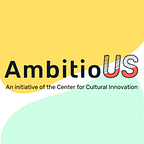Imagining: Courage
By Cate Fox
We have lead pipes in our American economic system. The extent to which we are aware of that fact is likely related to the degree of direct exposure to the system. For some people the pipes are hidden within the walls and framing of the larger structure; only thought about when renovations are contemplated or something has gone wrong and needs a fix. Pipes are removed and replaced with little thought about the wider system. But for many others the pipes are exposed, mixing invisible chemicals into critical water supplies that, under the best circumstances, sicken and damage the humans that ingest it. Simply replacing a few pipes is not enough to cleanse the system; it is inadequate. Daily, people wrestle with where to get clean water, how to make the water more tolerable, designing work-arounds for a system that works the way it is intended.
Whether or not we realize it or want to admit it, those lead pipes poison all of us. An economic system designed to work for some people by systematically working against others needs to be seen as toxic to all of us. Each day in communities all over the United States (and the world), local leaders, especially those who have direct exposure to the harmful structures, are working creatively with affected communities co-creating reliable systems that are not dependent on outside entities, that reflect their values while also addressing their community’s needs. These trailblazers are willing to try new structures and face many unknown factors. They are interested in how decision-making and ownership can be shared, how more people can have a voice and prosperity. These leaders are in it not to fix their own condition, their own house if you will — but they are interested in lifting up whole communities of people.
Leaders in the restorative and solidarity economic circles regularly cite Dr. Jessica Gordon-Nembhard’s book Collective Courage as a source of motivation and inspiration. Her book explores the African American community’s deep roots with cooperative and mutual aid economic systems one effort at a time. Dr. Gordon-Nembhard is an important way-shower for all those interested in building new, just systems. She has an amazing ability to pattern recognize both the logistical parts of cooperatives, like their common business development progression; and the social-emotional elements, like how these structures tied communities together and created benefits that extend beyond access to scarce or expensive resources or increased financial well-being.
By looking deeply into the past she is showing us a way forward. The idea of building new systems feels daunting, and yet over and over again the book provides examples of where African Americans studied various economic approaches and arrived at (and, in fact, still arrive at) the value of pooling resources and efforts to address “personal, family, social, political, and economic challenges’’ and the value of shared decision-making over how those assets are allocated. These are lessons in creativity, entrepreneurship, and economics. And courage. Dr. Gordon-Nembhard writes, “Leaders and members of YNCL [Young Negroes’ Co-operative League] clearly understood that cooperative economics was a strategy in pursuit of a larger goal — the elimination of economic exploitation and transition to a new social order.” There is a vision.
Even as various cooperative efforts crest and begin to break apart Dr. Gordon-Nembhard points to the progress, that the participants were in a better position even as the cooperative dissolved than before the cooperative began.
In our day-to-day work at AmbitioUS, we see hope and the potential for meaningful systems change in our investees’ efforts to do work that is grounded in shared economic prosperity, democratic participation, and cultural dignity. In designing these new systems, investees take risks with the belief that regardless of the outcomes they (and we) will continue to build on the past lessons toward systems that center Black, Indigenous, Latino/a/x, Asian individuals as well as other historically marginalized populations. And in that way, build a system that works for everyone.
The economic infrastructure may seem immovable, but it is a human construction. We know that the lead pipes will not fix themselves. Some people and institutions will choose to make investments in remediation, which will fix some parts of the economic system for some people. We need investments like that in the short term, but we also have to summon the courage to make intentional investments in new systems. Nelson Mandela had to face the likelihood of dying in jail in order to show us what courage requires. “I learned that courage was not the absence of fear,’’ he said, “but the triumph over it.”
May we triumph in our understanding of Mandela’s words and our willingness to test our actions against them.
Cate Fox is the Director of AmbitioUS, a national initiative of the Center for Cultural Innovation, that is focused on strategically shifting economic power and opportunities to BIPOC communities and artists.
